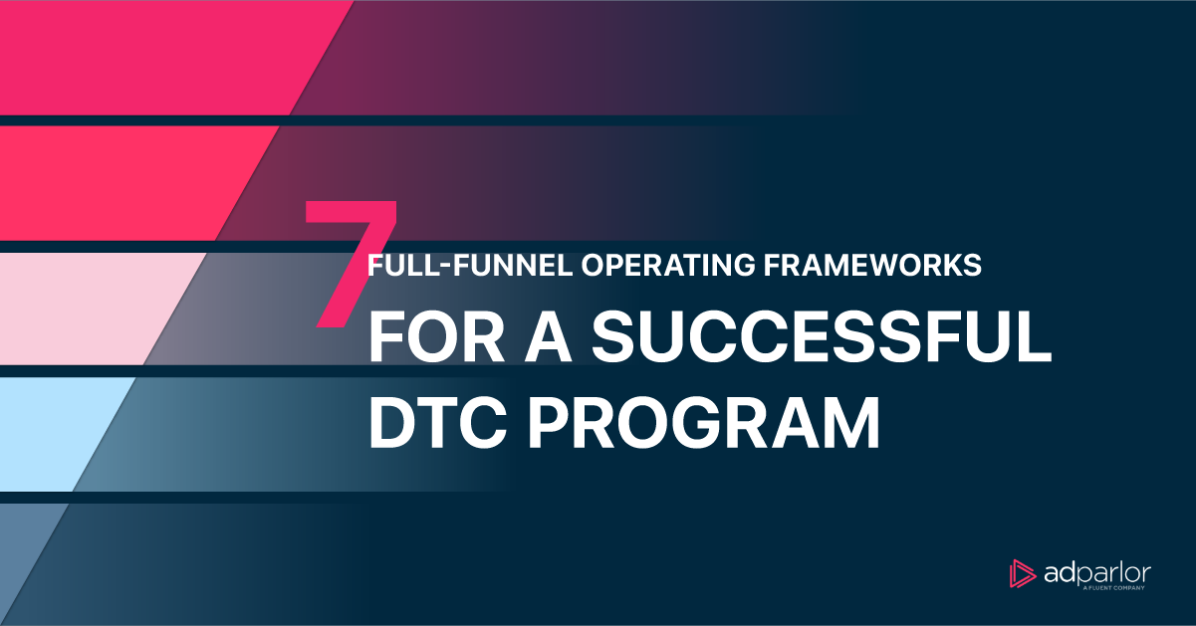7 Full-Funnel Marketing Frameworks for a Successful DTC Program

In a landscape with rising CPMs, consumers flocking to new platforms, and signal loss due to Apple’s App Tracking Transparency, it’s more complicated than ever for brands to achieve a profitable DTC (Direct to consumer) program. Gone are the days of setting up a few ads on Facebook and sitting back and counting the orders.
Retail brands need a new lens through which they can focus entirely on driving customer acquisition and retention, and that lens is Brand Building. This blog post explores seven full-funnel marketing operating frameworks to help your retail business win in a DTC world.
Table of Content
- Introduction to Brand Building
- Full-Funnel Performance Model for Brand Building
- Operating Frameworks
Brand Building
In an environment where sales are crucial, slashing prices is an easy path to explore. While it might provide a short-term boost in results, it creates long-term inefficiency and trains the customer to only look out for sales. With Brand building, you focus on building an emotional connection between the brand and consumer, resulting in loyal/repeat long-term customers. More on the brand or the product vs. short-term sales.
Full-Funnel Performance Model for Brand Building
Taking a Full-Funnel Performance approach can straddle lower funnel AND brand building as long as it complies with the AIDA customer journey model.
| AIDA | Description | Measurement KPI |
| Attention | The content must stop the prospect | % Of people that engage |
| Interest | Content must grab the prospect’s attention | Average Watch Time |
| Desire | The content must make the prospect explore more | CTR (Click-through rate) |
| Action | The content must effectively set up the final desired outcome | ROAS (Return on Ad Spend) |
When executing a full-funnel strategy, there is a lot to consider and refine, depending on each stage of the marketing cycle. We break down each stage with examples and tips in the full guide. Get it here.
As marketers, our challenge is to execute against this framework as efficiently as possible. Here are seven proven operating principles:
24/7 Campaign governance
This approach maximizes performance by covering all promotional, seasonal, and weekend campaigns. While expert human touch is essential, leveraging Rules-based technology to provide guardrails improves results and gives those humans time off to recharge.
Close collaboration between the marketing and analytics teams
It is critical to have a consistent data feedback loop that allows alignment on Lifetime value (LTV) and Customer Acquisition Costs (CAC). Successful DTC brands measure beyond in-platform ROAS. They ensure accurate and accountable measurement that considers an established learning agenda to answer real business questions.
Nimble Campaign Management
A full-funnel media mix executed across multiple platforms maximizes awareness, generates intent, and ultimately converts. For success, though, rigorous testing around all aspects of the campaigns is required to scale the winning combinations. In addition, being flexible with bid and budget optimizations specific to new customers vs. repeat customers is critical.
Creative Strategy
The media quality and creative execution within ad formats heavily impact your ROI. A helpful tip is to use engaging, mobile-first creative that shows the brand early and often. This method is proven to improve ad recall by over 20%. Lastly, design for “sound off” experiences using text overlays and closed captioning except for TikTok, which favors popular and original sound.
Influencer Strategy
You can leverage creators to build incremental brand equity. Campaigns that run branded content with brand ads drive a dramatically lower cost per purchase intent and a lower cost of ad recall than brand ads alone.
Checkout Experience
Creating a seamless user checkout experience removes friction from the buying process. Consider enabling checkout on Instagram to allow people to discover products and make their purchases in-app with just a few taps.
Social Platform Expertise
Choose an agency partner with deep roots across all the paid-social platforms. In addition, look out for experience in scaling retail/eTail/DTC programs profitably with multi-channel executions. Each digital platform has nuances, strengths, and weaknesses, and leveraging each to its maximum benefit requires deep skill sets and operational excellence.
For a more in-depth guide with practical tips and suggestions, check out our comprehensive Blueprint for Retailers to WIN in a DTC World.
If you are looking to unlock growth and grow your eCommerce business, we can help! Let’s chat